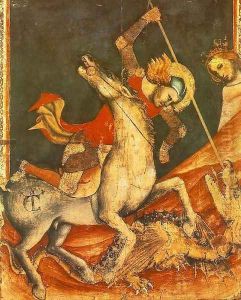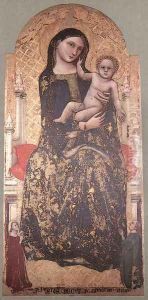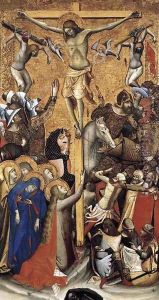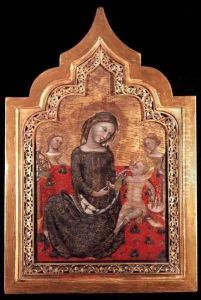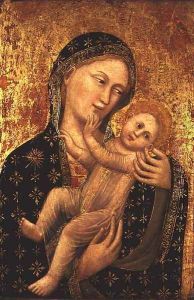Vitale Da Bologna Paintings
Vitale da Bologna, also known as Vitale di Almo de' Cavalli, was an Italian painter, notable for his significant contribution to the Bolognese School of painting during the Gothic period. His exact birth and death dates are not precisely known, but he is thought to have been born around 1309 and to have died circa 1361.
Vitale's work is characterized by its combination of the Byzantine art style, which was prevalent during his time, with emerging Gothic sensibilities. His paintings are distinguished by their vivid colors, graceful figures, and the narrative clarity of the scenes he depicted. Although much of his life remains shrouded in mystery, art historians have been able to piece together a portrait of his career through the works he left behind.
Vitale's earliest documented work dates to the 1330s, and he was active in Bologna and the surrounding region, including Faenza and Pistoia. One of his most significant commissions was for the frescoes in the Basilica di San Petronio in Bologna, where he painted scenes from the life of St. John the Baptist. This work, unfortunately, did not survive the test of time as the basilica underwent numerous renovations.
Another important work by Vitale da Bologna is the altarpiece for the church of Santa Maria dei Servi in Bologna, painted in 1345, which is considered one of his masterpieces. The central panel, depicting the Madonna and Child enthroned, is a prime example of his ability to infuse traditional iconography with a new sense of humanity and emotion.
Vitale was also known for his small-scale devotional paintings, which were intended for private contemplation. These works are remarkable for their intimate, personal feel and often feature detailed landscapes and intricate architectural elements.
Despite his death in the mid-14th century, Vitale da Bologna's influence persisted, and his style can be seen in the works of subsequent generations of painters in Bologna and across Italy. His integration of narrative and decorative elements in frescoes and panel paintings helped to pave the way for the developments in Italian art that would reach their zenith during the Renaissance.
